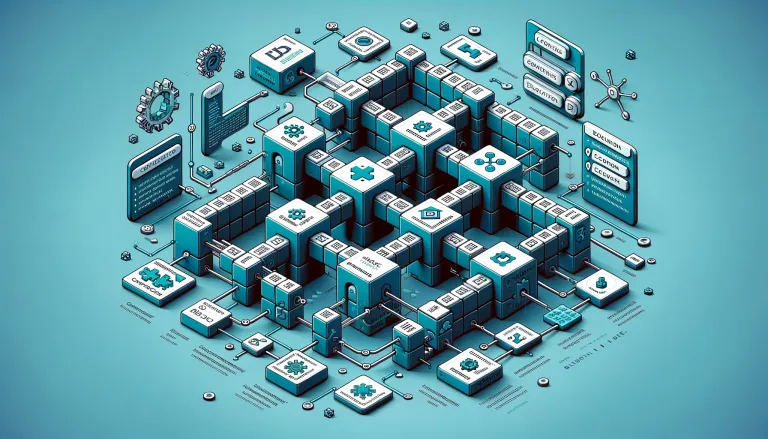Modular blockchains are emerging as a significant trend in the blockchain technology landscape, offering a new paradigm for the design and deployment of blockchain systems.
These systems differ from traditional, monolithic blockchains by breaking down the blockchain structure into individual, specialized modules that can be combined in various configurations to create a custom blockchain solution tailored to specific use cases.

Key Characteristics and Benefits of Modular Blockchains:
Flexibility and Customization: Modular blockchains allow for the mix-and-match of different modules such as consensus methods, smart contract platforms, and storage solutions, enabling developers to construct a blockchain that meets their specific needs. This flexibility can lead to increased efficiency, cost reductions, and enhanced security and scalability for blockchain applications .
Scalability: Traditional blockchains often face scalability issues as they grow larger and more complex. Modular blockchains, by contrast, can address specific types of transactions more effectively, improving overall scalability. For example, a blockchain optimized for supply chain management might be engineered to handle high volumes of transactions related to the movement of goods more efficiently .
Interoperability: Modular blockchains can be designed to interact with other systems and blockchains, which is especially important in sectors with diverse blockchain use. This interoperability allows for the development of a more cohesive and effective blockchain ecosystem .
Security and Ease of Development: By focusing on specific modules, developers can more easily identify and address security vulnerabilities. Additionally, the modular approach can simplify the development process, allowing for quicker build times and potentially lower costs .
Implementation Examples
Celestia is highlighted as a prime example of a modular blockchain, emphasizing its role in solving scalability issues while maintaining decentralization.
By decoupling execution from consensus and focusing on data availability, Celestia supports the deployment of execution-specialized blockchains, known as sovereign rollups. These rollups can publish transactions to another blockchain for ordering and data availability but manage their own settlement, maintaining independence and security benefits .
The move towards modular blockchains represents a significant shift in the blockchain space, offering solutions to longstanding issues such as scalability, interoperability, and security. As this technology continues to evolve, it holds the potential to drive further innovation and adoption across a wide range of industries.
Monolithic Blockchain
Solana is considered a monolithic blockchain, not a modular one.
In a monolithic blockchain, execution, data availability, and consensus mechanisms are unified in a single layer. Solana optimizes for scalability, requiring participants to operate high-performance validator nodes capable of processing thousands of transactions per second.
This architecture contrasts with modular blockchains, which separate these functions into distinct layers or components to enhance flexibility, scalability, and efficiency.
While Solana offers significant advantages in terms of speed and transaction throughput, its monolithic structure means it approaches scalability and performance differently than modular blockchains.